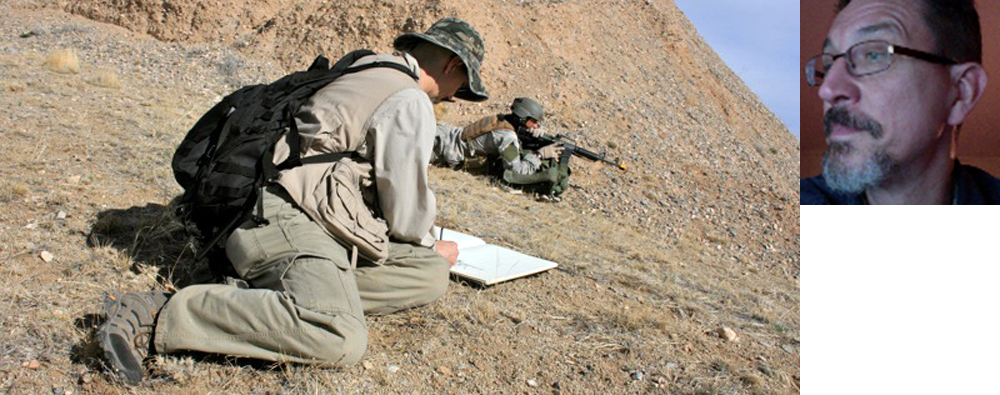Keeping Busy- Part 6-Catching Up
FEBRUARY 18, 2015
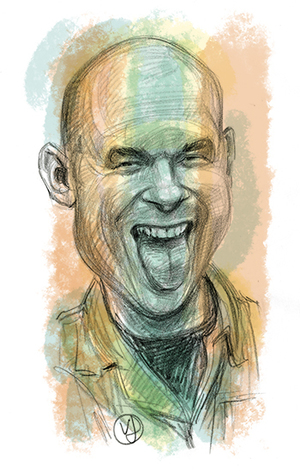
Last year I was involved with a couple extended projects that I couldn’t post about until they were finally in use and then found that by the time that happened I was being distracted by other work and unable to give a fair accounting of the efforts for Drawger. This is an attempt to rectify some of that.
Over the Christmas holidays of 2013-14, I was contacted by Alexander Isley to provide portraits for a TED conference- TEDMED to be exact. Leaders in science,medicine and entertainment speaking or performing their expertise. He had wanted to use me the year before but as that event was presented in affiliation with The Rhode Island School of Design's STEM program, the focus was to have its very talented students create the portraits. Alexander remained true to his promise and pushed for me the next time around. Originally, the estimate was for about 40 portraits over the course of a month to a month and a half. Not exactly portraits but not exactly caricatures either. Color. Two things went through my mind during the initial conversations- would I have enough time to do justice to the portraits- especially when depending upon reference provided by TED, and, more importantly, what did I need to learn to create 40 color images in such a limited amount of time. The prospect of playing with color decisions on original art, failing, and having to start from scratch was quite unsettling even as I was doing the math in my head how long one image would take.
Because I had already agreed to take on the challenge in one of those jump in the water without exactly figuring out how to swim first decisions, the attention turned to the how.
I’m a Luddite by conditioning. Bricks and mortars- pen, pencil, brushes to paper. Other than using Photoshop to scan and ‘photomerge’, if necessary, and to click ‘auto’ for color correction, tech has been like Kryptonite to me. I am a slow and inconsistent reader of printed instructions and my previous attempts at following web tutorials were invariably exercises in frustration leaving me with serious concerns over my IQ. Life experiences have confirmed I do much better with hands on training and repetition to grind whatever I’m learning into my porous memory. The first attempts at color application solutions were more old school but provided some groundwork for Alex and his excellent assistant, Christina Holland, to expand and provide suggestions. The color was to be added not to render but provide an atmosphere. Loose, more abstract. Okay. Great. But how to play without starting from scratch over and over?
Christopher Hitchens remarked that being given a terminal diagnosis tightens one’s focus. It’s remarkable how panic, a first cousin to necessity, tightens one’s concentration and spurs learning skills. Three things happened within short time of each other. One, the task of creating watercolor effects in layers over scanned original work was resolved when my good friend, Dale Stephanos, responding to my questions regarding hardware, offered his older Cintiq to work on. A Godsend. The second Godsend was employing the services of Lisa Reist, assistant to another great friend, Steve Brodner. She spent a nice daylong intensive tutoring me on Photoshop layering, color palette selection (Isley and TED had chosen a core group of colors), trashing layers that don’t work, adding layers that do, all the material that a student in 101 would learn. I am crediting Lisa’s patience and good humor with the development of my skills, as she repeated functions with me till I’d be doing them without any coaching from her even as she sat to the side watching. I’ve always had a positive dread of making an error that I am unable to get out of without destroying everything else in the process. Photoshop as defusing a live atom bomb. Clip the wrong wire and kablooey! One of the most important lessons was learning not to panic if something didn’t work out right or the wrong key got clicked. Simple stuff for the seasoned, not for the beginner. Lisa remained on call throughout the project for questions, most of which dealt with forgetting something I had learned the day before and just needing to remember that one step. I kept notes as well. The third Godsend was downloading Kyle Webster’s Ultimate watercolor applications into my Photoshop which gave me a wide variety of effects to work from. Over the course of the project the preferred tools out of the selections became the Ultimate Watercolor Wet, Wet and Wild Watercolor and Watercolor Soft Wash Smooth. The sense of play was in full force.
The list of speakers was provided. Reference material started arriving in DropBox in chunks. All the while I Googled on my own seeking potential shots that were less studio portraits. As many of the TEDMed presenters were known in their professions I also searched YouTube for videos which often caught the expression I had hoped for. ‘Shift command and #4 for the screen shot. My greatest worry was that the photo reference would be tiny- very low resolution and poor detail. In some cases that did happen and I decided to contact the subjects directly to either ask for other photos or to meet and shoot them in person.
Drawings were done traditionally with Prismacolor pencils, b/w on paper and then scanned. Some of the subjects, often those that came with the best reference, were first try successes, others could drag out for a seemingly endless day of drawings, crumbled papers filling up the studio. Sometimes the faces that interested me the most turned out to be the most challenging and required many re-dos as I attempted to visually explain what captured my attention. So much fun was I having with both Photoshop and Kyle’s apps that many of the subjects wound up with several color versions for TED and Isley to select from.
The folks at TED were very excited with what Alexander and Christina kept feeding them, requesting re-dos on only a few occasions. But something else was happening. The event was pushed back a few months from June to September with the presentations happening on stages both east and west coast simultaneously; the 40 portraits expanded to 60 then 70, finally ending at 90. Already in a groove I welcomed the extra work as the deadlines kept getting pushed back. The pressure was not so daunting as I had more time to play.
In the end, everyone seemed very satisfied with the results. The images were part of a beautiful brochure created for the event along with banners that hung in the auditoriums. Almost as important as the gig itself was the education I received in working with new tools- tools that I continue to employ to this day. Sending color sketches to clients has never felt easier. Photoshop doesn’t feel like a minefield. Old dogs can indeed learn new tricks. On this matter 60 feels like a new 25. Many thanks to Alexander Isley for calling me in on this fascinating project and his associate, Christina Holland who was my point person throughout the project. Great people to work for and with.
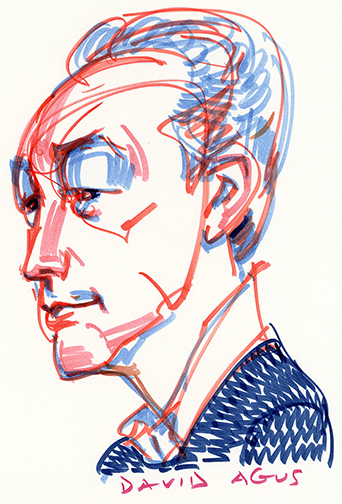
Feeling out what approach to take to the project. Earliest scribblings with color brush pens.
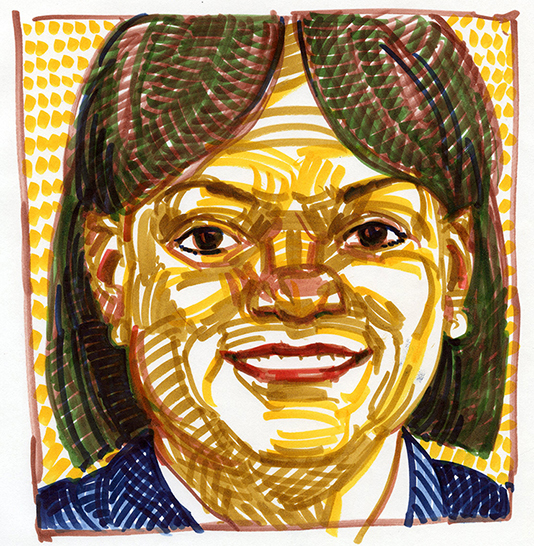
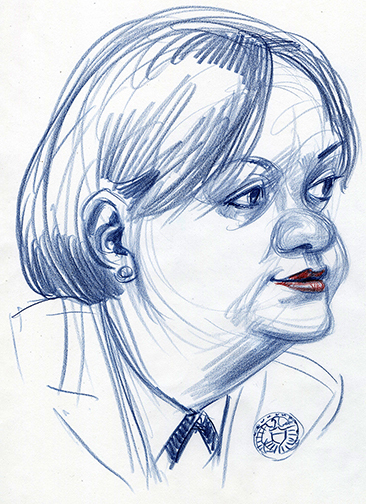
Alexander Isley was very aware of my drawings of soldiers and Marines but he had also been the designer for years for a financial publication to which I contributed stylized portrait caricatures of business leaders. His hope was to combine those drawing approaches. Color was less the concern than good but not terribly serious likenesses.
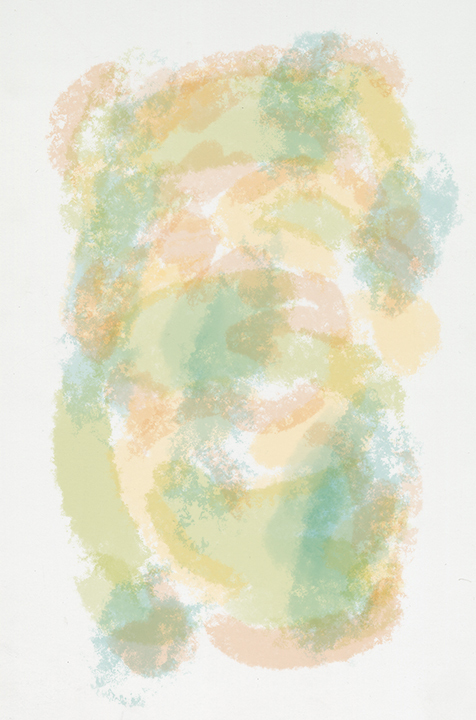


A very convoluted process of printing first the scanned drawing and then reprinting the scanned color.

We finally seemed to have something to work with and present. Alex and Christina put together dummies of the brochure along with all the other designing for the event they were in charge of.

Playing with layering. Way too intense for what was intended for the brochure and banners but great fun to experiment. The more I did of these, editing layers and adding the more confident I got messing with Photoshop and Kyle's apps.
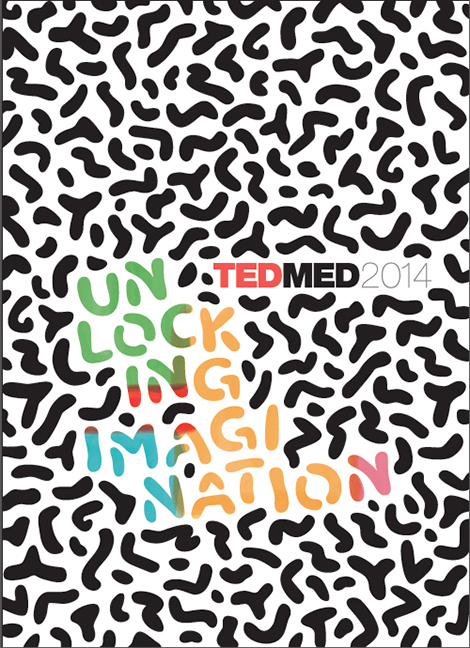
The finished brochure incorporating some of the organic shape themes from the watercolor studies.
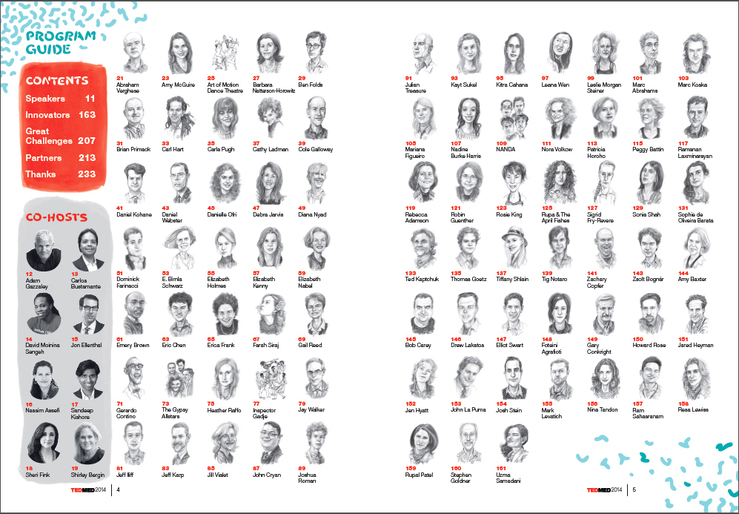
80 heads eventually making it to the speaker list. Some had dropped out along the way.

Even the illustrator got a nice bio page. I worked off a template of Hanoch Piven's who had done the portraits for a previous event, keeping the bio nice and precise.
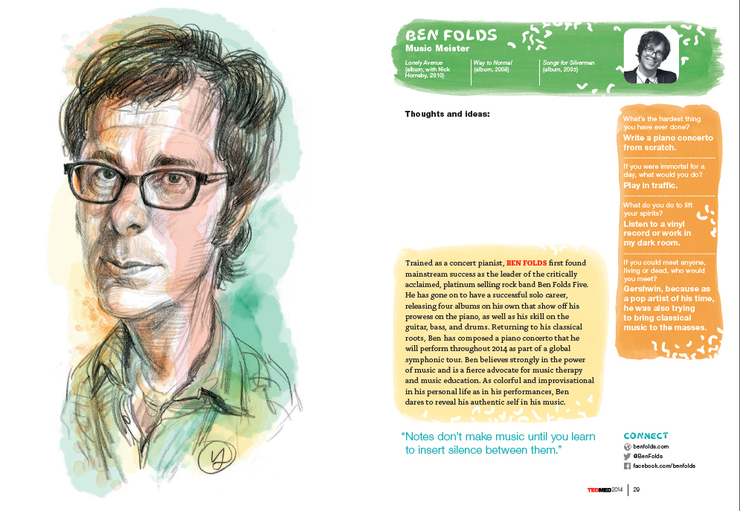
This is a selection of portraits that I felt worked particularly well. To post them all would be punishing and a bit of a redundancy. One of the challenges as we moved past 40 portraits was trying to keep the imagery fresh looking and still retain a sense of consistency.
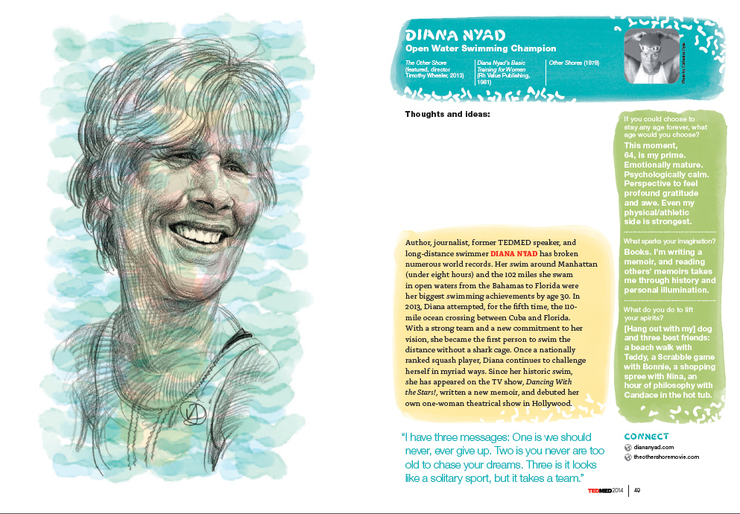
Diana Nyad was one speaker who inspired a desire to create more aquatic marks and colors that tied in with her accomplishments.
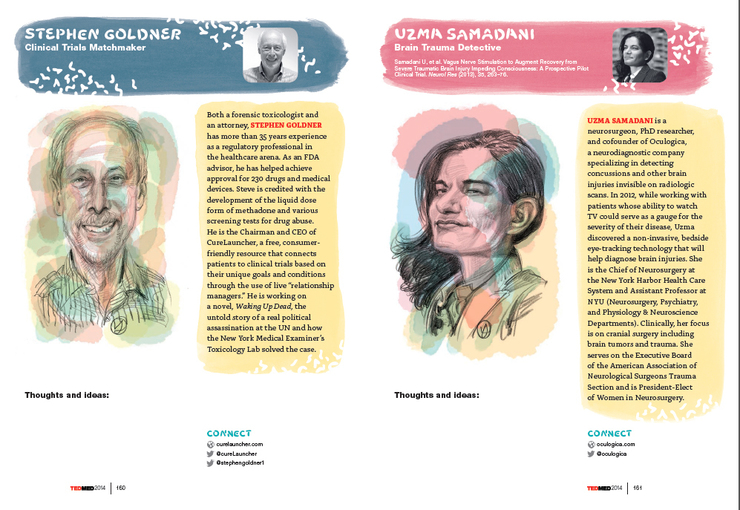

Abraham Verghese
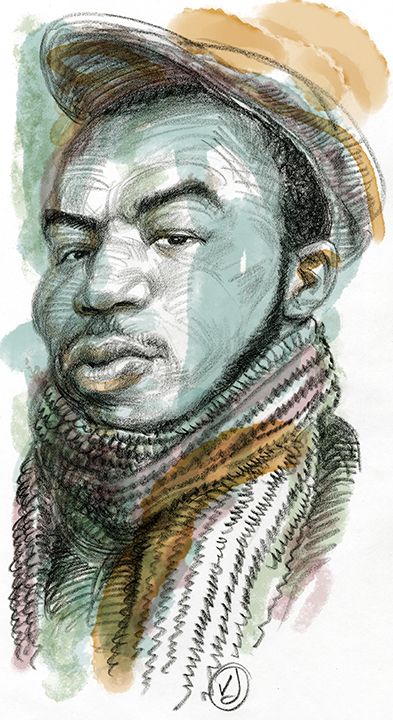
Poet Joshua Bennett
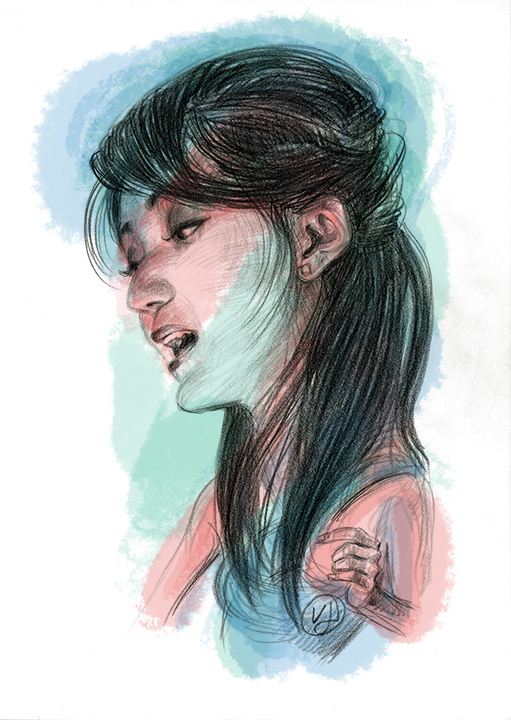
Artist Erica Chen
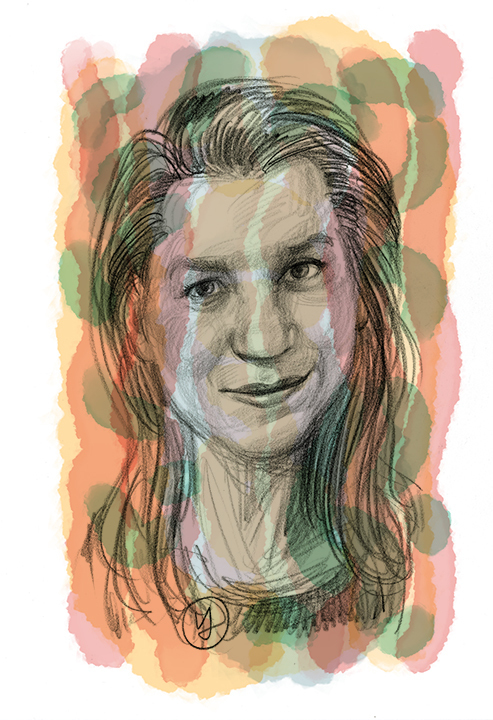
Kayt Sukel
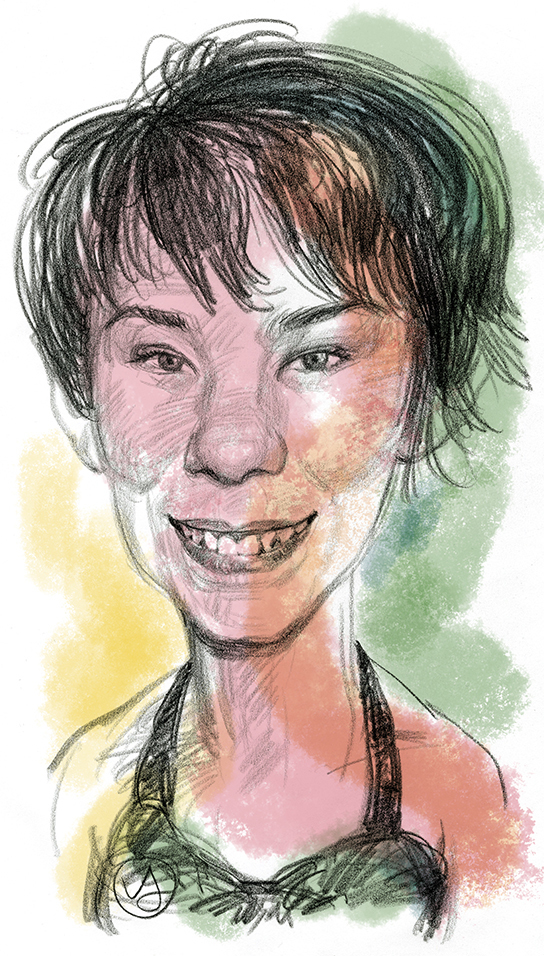
One of the many subjects who received multiple color options. Rosie King.
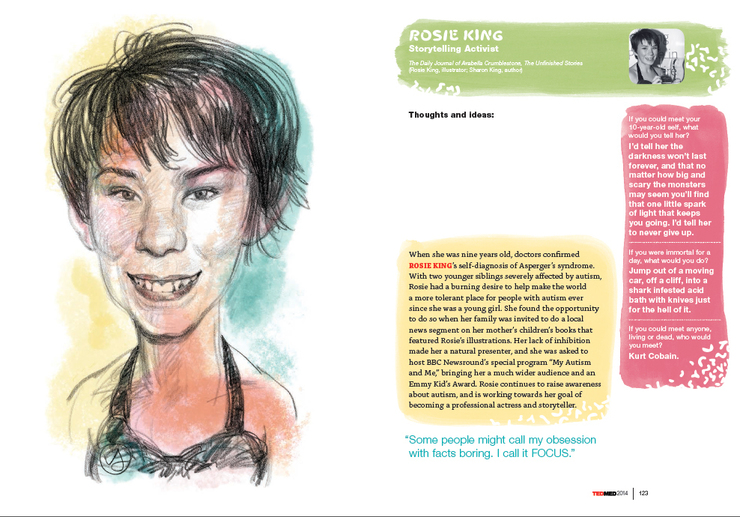
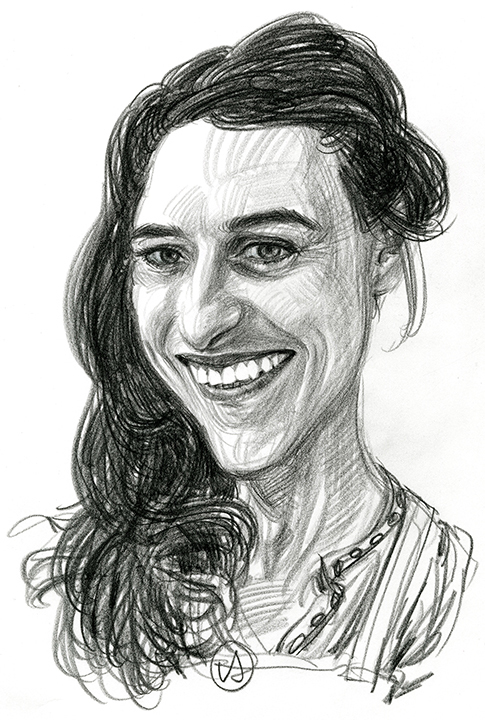
One of those subjects that obsessed me. Sophie de Oliviera Barata, an artist who creates prosthetics. She looked different in every photo I could find and had such striking features in every shot. This was my preferred drawing but TED went with another one.
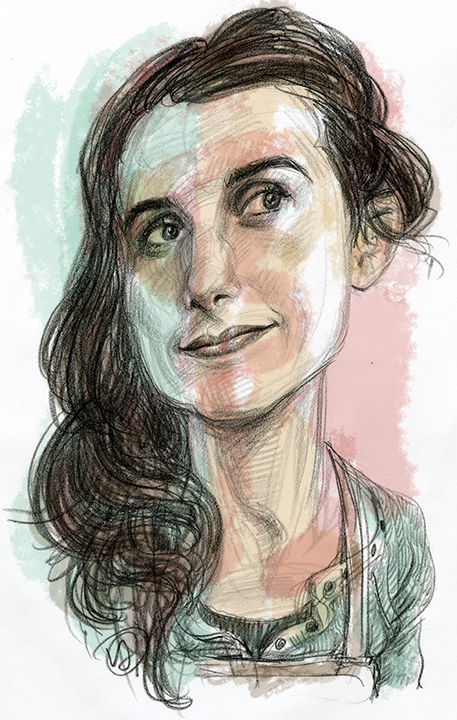
Barata
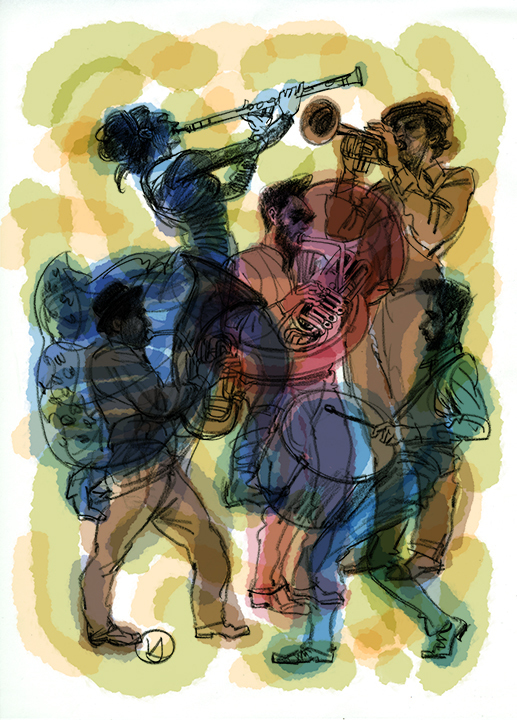
The group Inspector Gadje
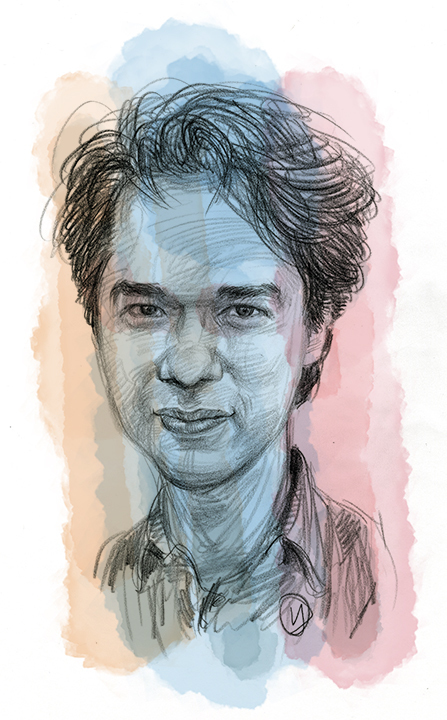
Pianist Zolt Bognar
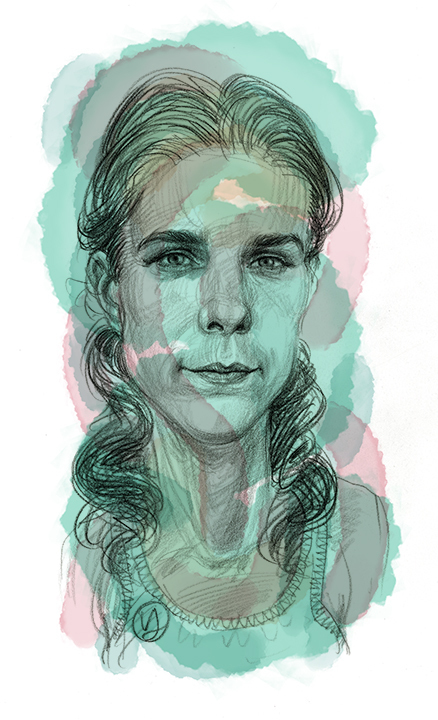
One who didn't get into the brochure but caught my attention. Rebecca Gomperts. She had a look in her photos that engaged.
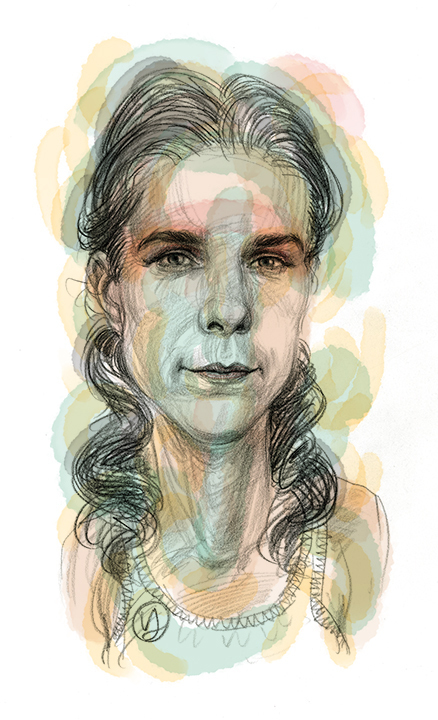

Playing with one of the many choices from Kyle Webster's painting app.
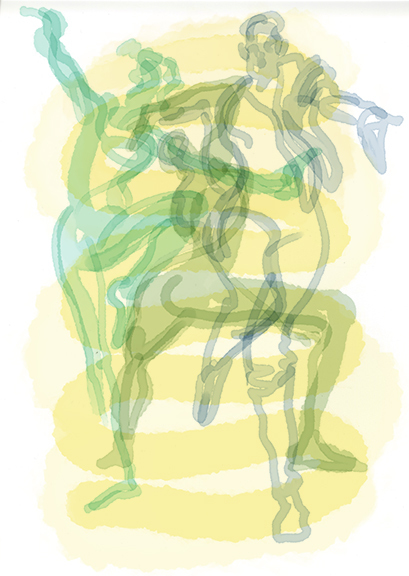
I was hoping to maybe just create an image based on movement. This is the dance company AOM. TED felt some recognizable features were necessary.

Incorporating the drawing with the watercolor option. Suddenly it seemed I got too specific.
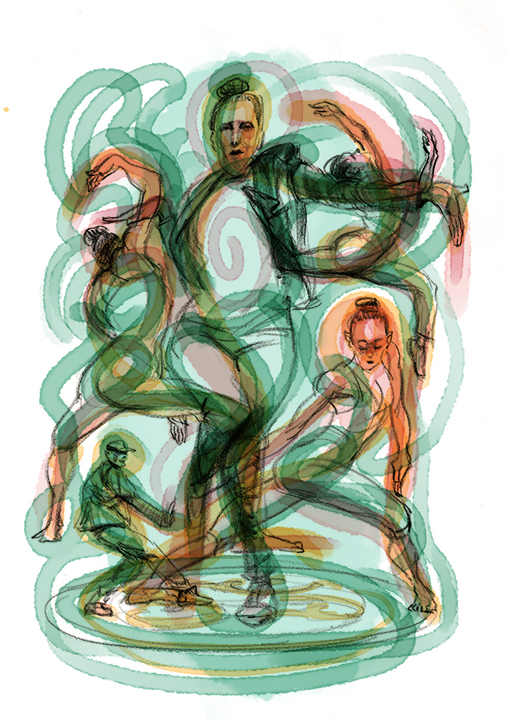
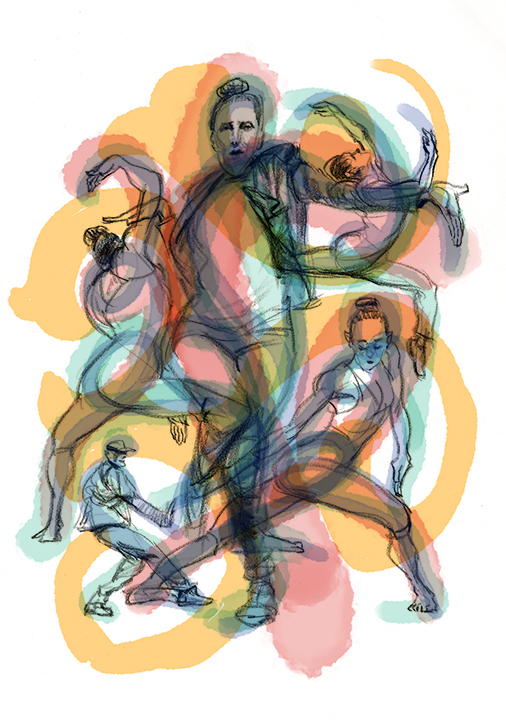

An alternative drawing. Less specificity.
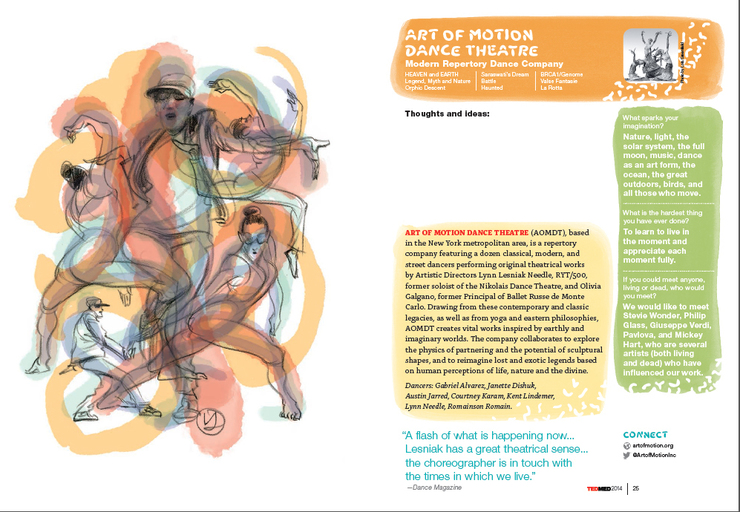
Isley took the layers from one image and overlaid them on the less specific drawing.
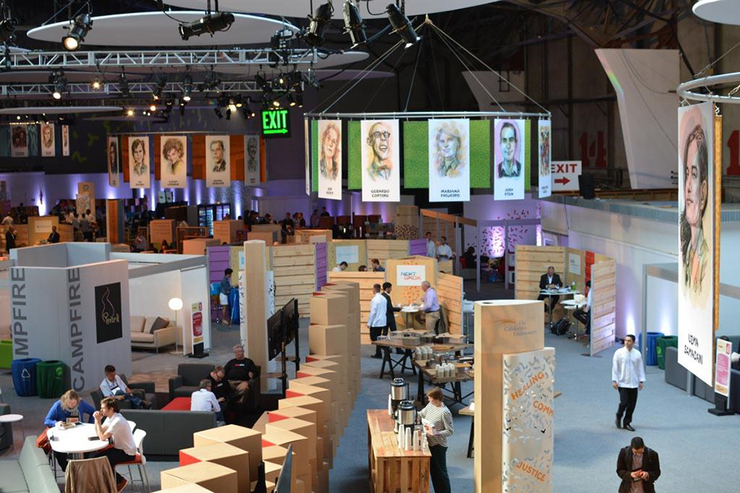

© 2024 Victor Juhasz
